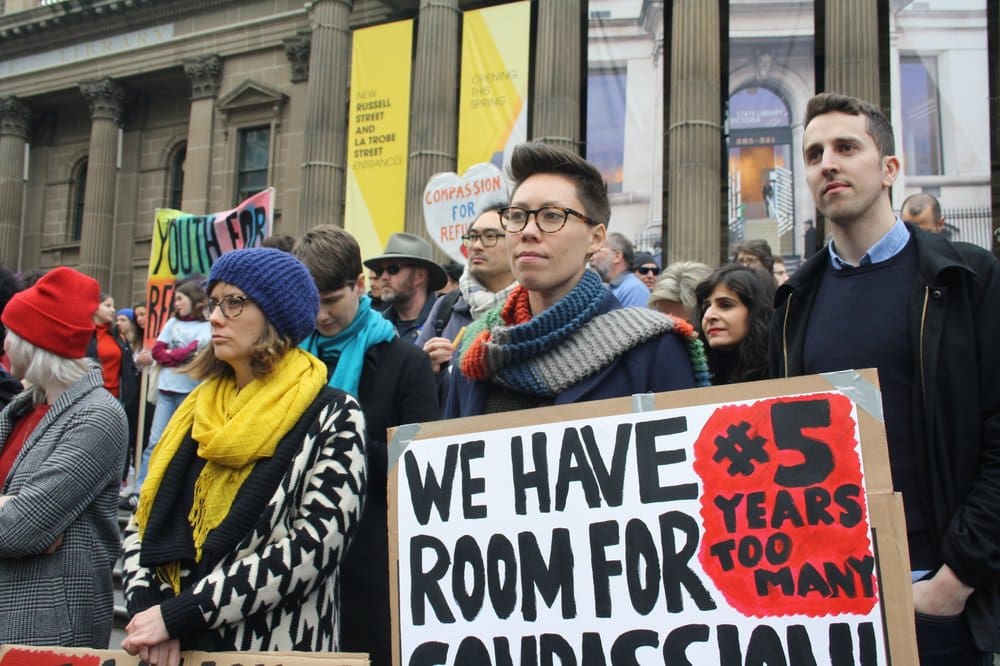Explainer: Solitary Confinement of people in prison
Solitary confinement is a cruel practice that causes irreparable harm to the people who are subjected to this form of physical and sensory isolation. Governments must ban the archaic and inhumane use of solitary confinement in Australian prisons.
What is solitary confinement?
Solitary confinement is the isolation of a person in a cell for 22 hours or more a day without meaningful human contact. Prolonged solitary confinement is solitary confinement for a time period in excess of 15 consecutive days.[1]
This exists in all Australian jurisdictions, but is often called by different names
The practice of solitary confinement exists in all Australian states and territories by many different names: isolation, separation, seclusion, segregation and lockdown. While the words ‘solitary confinement’ are not always used explicitly in Australian law, governments should prohibit the use of this cruel practice, regardless of the label.
When a person is isolated in solitary confinement, they will spend 22 or more hours a day in a concrete cell roughly the size of a single car park space. Before being put in the cell, the person will be subjected to a full body strip search. In the cell, the person will often have limited ventilation and natural light. Meals are delivered through slots in solid steel doors. People are forced to eat alone, within arm’s reach of the toilet. When allowed out of the cell, the person is usually alone, in a concrete pen or caged yard, for no more than an hour. People in solitary may be denied family visits, medical care, telephone calls and access to educational, recreational and reading materials.
The physical and psychological consequences of long term solitary confinement can be devastating. It has long-term, irreversible impacts on people’s health and wellbeing. It also puts people at risk of losing their grasp on who they are and of how, and whether, they are connected to a larger world.
Why should solitary confinement be banned?
1. It’s harmful and cruel
Solitary confinement can be damaging to any person. Deterioration in physical and psychological health is likely to occur after only a few days. The health risks and long term impacts increase with each day. Prolonged isolation and sensory deprivation can cause anxiety, depression, anger, obsessive thoughts, paranoia, hallucinations and psychosis. Where a person has pre-existing mental health conditions, solitary confinement can be even more detrimental: exacerbating their existing condition and increasing their risk of suicide and self-harm.[2]
The harmful effects of solitary confinement do not necessarily come to an end when a person is released. Solitary confinement can cause permanent harm, including long-term psychiatric effects,[3] and an increased risk of early and preventable death.[4]
The Royal Commission into Aboriginal Deaths in Custody found solitary confinement has a particularly detrimental impact on Aboriginal and Torres Strait Islander people and noted that “it is undesirable in the highest degree that an Aboriginal prisoner should be placed in segregation or isolated detention.”[5]
2. It’s counter-productive
Use of this harmful practice does nothing to address the underlying causes of ‘challenging’ behaviour, and can even exacerbate those behaviours as a person’s mental and physical health deteriorate.
While prison authorities justify the use of solitary confinement as a behaviour and risk management tool, solitary confinement is frequently used as a substitute for proper health care for people with disability or compromised mental health. The stress of the closed environment, absence of meaningful social contact and the lack of activity can, however, severely heighten behaviours and symptoms.[6]
The vast majority of people in prison will be released and will spend the rest of their lives as our neighbours, in our communities. Subjecting people in prison to cruel treatment for days, weeks or years and then releasing them from prison does not make us safer. Rather, it damages people and can lead to an increased risk of reoffending after release.
3. It’s not a substitute for proper health care
People with disability are disproportionately represented in solitary confinement units in Australia.[7] As Aboriginal and Torres Strait Islander people with disability are overrepresented in the Australian prison system,[8] they are also likely overrepresented in solitary confinement cells.
Prisons need to provide people with better health care and support to address health and disability needs. Solitary confinement cells should not be used to warehouse people whose challenging behaviours are symptoms of, or connected to, their disability and/or mental health condition and for which they are not receiving appropriate treatment or accommodations for while in prison.
International human rights law strictly prohibits the use of solitary confinement on people with mental or physical disabilities when their conditions would be exacerbated by such measures.[9] Research shows that solitary confinement of any duration can severely exacerbate existing mental conditions or lead to the appearance of a new mental illness.[10] This has led to an increasing acceptance that subjecting a persons with mental disability to solitary confinement is cruel, inhuman and degrading treatment.[11]
4. It’s not necessary
Prisons should not be subjecting people to the harmful and cruel practice of solitary confinement and should instead be adopting laws and policies that promote safe communities and fair treatment.
If there are exceptional circumstances requiring that a person be separated from others, this should only be done as a last resort and for the shortest time possible. In those circumstances, there are significantly less restrictive and more humane ways to separate people. Prisons should prioritise the use of de-escalation strategies, provide special programming for those at risk of ‘challenging’ behaviour and adopt alternative responses that better manage interactions between people in prison and their peers (for example, planning and managing which people in prison can safely spend time together – and which cannot – through the use of things like prisoner association plans).
Governments must ban solitary confinement
State and Territory laws, policies and guidelines should be amended to strictly prohibit the use of solitary confinement, by any name, in Australian prisons.
In line with international human rights law, State and Territory laws, policies and guidelines should clearly define the circumstances in which a person may be lawfully separated from other people in prison. This should be limited to exceptional cases, and appropriate safeguards must also be put in place.
This explainer is not legal advice
The contents of this publication do not constitute legal advice, are not intended to be a substitute for legal advice and should not be relied upon as legal advice. You should seek legal advice or other professional advice in relation to any particular matters you or your organisation may have.
[1] United Nations Standard Minimum Rules for the Treatment of Prisoners (Mandela Rules) UN Doc E/CN.15/2015/L.6/Rev, rule 44.
[2] J. Mendez, Special Rapporteur, Interim report of the Special Rapporteur of the Human Rights Council on Torture and Other Cruel, Inhuman or Degrading Treatment or Punishment, UN Doc A/66/268 (5 August 2011) 17 [62]; Ibid 333-8.
[3] Stuart Grassian, ‘Psychiatric Effects of Solitary Confinement’ (2006) 22 Washington University Journal of Law and Policy.
[4] Christopher Wildeman and Lars Andersen, ‘Solitary confinement placement and post-release mortality risk among formerly incarcerated individuals: a population based study’ (2020) 5(2) The Lancet Public Health.
[5] Royal Commission into Aboriginal Deaths in Custody (1991).
[6] Human Rights Watch, ‘Abuse and Neglect of Prisoners with Disabilities in Australia’ (Report, 6 February 2018).
[7] Human Rights Watch, ‘Abuse and Neglect of Prisoners with Disabilities in Australia’ (Report, 6 February 2018).
[8] Australian Civil Society CRPD Shadow Report Working Group, ‘Disability Rights Now 2019’, submission to the UN CRPD Committee, List of issues prior to the submission of the combined second and third periodic reports of Australia, 26 July 2019, 24. 78.
[9] United Nations Standard Minimum Rules for the Treatment of Prisoners (Mandela Rules) UN Doc E/CN.15/2015/L.6/Rev, r 45.
[10] Juan E. Méndez, Interim report of the Special Rapporteur of the Human Rights Council on torture and other cruel, inhuman or degrading treatment or punishment, UN Doc A/66/26 (5 August 2011).
[11] Ibid.

Explainer: Yoorrook Justice Commission finds systemic racism and calls for action
An explainer on the Yoorrook Justice Commission's final reports released on 1 July 2025.
Read more
Human rights briefing: Victoria’s anti-protest laws
The Victorian Government is proposing four major restrictions on the right to protest.
Read more
Explainer: NSW’s proposed laws on hate crimes and places of worship
If passed, new laws in NSW would have wide-ranging implications for the right to peaceful assembly and may lead to the criminalisation of conduct which does not impact on the rights of people to practice their religion and be protected from racial or religious hatred.
Read more



